A Comprehensive Guide to LTC7150SIY#PBF DC DC Switching Regulator
Linear Technology/Analog Devices
3.1V 42-Pin LTC7150 DC DC Voltage Regulator 1 Outputs 1MHz Tray 42-LFBGA









3.1V 42-Pin LTC7150 DC DC Voltage Regulator 1 Outputs 1MHz Tray 42-LFBGA
This article provides an in-depth analysis of the LTC7150SIY#PBF DC DC Switching Regulator manufactured by Linear Technology/Analog Devices. It covers the product description, key features, primary and secondary applications, reference designs, alternative parts, and frequently asked questions about this versatile voltage regulator.
Product Introduction
Description:
The LTC7150SIY#PBF is a high-performance DC DC switching regulator designed for step-down voltage applications. It offers a wide input voltage range of 3.1V to 20V and can deliver a maximum output current of 20A. The regulator operates at a switching frequency of 1MHz and features synchronous rectification for improved efficiency. With a compact 42-LFBGA package and a wide operating temperature range of -40°C to 125°C, the LTC7150SIY#PBF is suitable for various demanding power supply designs.
Features:
- Wide input voltage range (3.1V to 20V)
- High output current capability (up to 20A)
- Adjustable output voltage (0.6V to 5.5V)
- High switching frequency (1MHz)
- Synchronous rectification for improved efficiency
- Compact 42-LFBGA package
- Wide operating temperature range (-40°C to 125°C)
Applications:
Primary Applications:
- Industrial power supplies
- Telecom and networking equipment
- Server and storage systems
- Automotive power distribution
- LED lighting applications
Secondary Applications:
- Consumer electronics
- Medical devices
- Renewable energy systems
- Test and measurement equipment
- Robotics and automation
Applicable Specific Modules:
- Power management modules
- Voltage regulation modules
- Buck converter modules
- Power supply modules
Reference Designs:
1. Industrial Power Supply Design using LTC7150SIY#PBF
2. Automotive Power Distribution System with LTC7150SIY#PBF
3. LED Lighting Driver Circuit featuring LTC7150SIY#PBF
Alternative Parts:
- LTC7150S
- LTC7150H
- LTC7150A
FAQs:
Q: What is the maximum output current of the LTC7150SIY#PBF?
A: The LTC7150SIY#PBF can deliver a maximum output current of 20A, making it suitable for high-power applications.
Q: Is the LTC7150SIY#PBF RoHS compliant?
A: No, the LTC7150SIY#PBF is not RoHS compliant. Please check the product specifications for more information on environmental compliance.
Q: Can the output voltage of the LTC7150SIY#PBF be adjusted?
A: Yes, the output voltage of the LTC7150SIY#PBF is adjustable within the range of 0.6V to 5.5V, providing flexibility for various design requirements.
In conclusion, the LTC7150SIY#PBF DC DC Switching Regulator offers a versatile and efficient solution for a wide range of power supply applications. With its high-performance features, compact package, and wide operating temperature range, it is a reliable choice for demanding design requirements in various industries.
Specifications
- TypeParameter
- Lifecycle Status
Lifecycle Status refers to the current stage of an electronic component in its product life cycle, indicating whether it is active, obsolete, or transitioning between these states. An active status means the component is in production and available for purchase. An obsolete status indicates that the component is no longer being manufactured or supported, and manufacturers typically provide a limited time frame for support. Understanding the lifecycle status is crucial for design engineers to ensure continuity and reliability in their projects.
PRODUCTION (Last Updated: 2 weeks ago) - Factory Lead Time12 Weeks
- Mounting Type
The "Mounting Type" in electronic components refers to the method used to attach or connect a component to a circuit board or other substrate, such as through-hole, surface-mount, or panel mount.
Surface Mount - Package / Case
refers to the protective housing that encases an electronic component, providing mechanical support, electrical connections, and thermal management.
42-LFBGA - Number of Pins42
- Operating Temperature
The operating temperature is the range of ambient temperature within which a power supply, or any other electrical equipment, operate in. This ranges from a minimum operating temperature, to a peak or maximum operating temperature, outside which, the power supply may fail.
-40°C~125°C TJ - Packaging
Semiconductor package is a carrier / shell used to contain and cover one or more semiconductor components or integrated circuits. The material of the shell can be metal, plastic, glass or ceramic.
Tray - Part Status
Parts can have many statuses as they progress through the configuration, analysis, review, and approval stages.
Active - Moisture Sensitivity Level (MSL)
Moisture Sensitivity Level (MSL) is a standardized rating that indicates the susceptibility of electronic components, particularly semiconductors, to moisture-induced damage during storage and the soldering process, defining the allowable exposure time to ambient conditions before they require special handling or baking to prevent failures
3 (168 Hours) - Base Part Number
The "Base Part Number" (BPN) in electronic components serves a similar purpose to the "Base Product Number." It refers to the primary identifier for a component that captures the essential characteristics shared by a group of similar components. The BPN provides a fundamental way to reference a family or series of components without specifying all the variations and specific details.
LTC7150 - Function
The parameter "Function" in electronic components refers to the specific role or purpose that the component serves within an electronic circuit. It defines how the component interacts with other elements, influences the flow of electrical signals, and contributes to the overall behavior of the system. Functions can include amplification, signal processing, switching, filtering, and energy storage, among others. Understanding the function of each component is essential for designing effective and efficient electronic systems.
Step-Down - Number of Outputs1
- Voltage - Input (Max)
Voltage - Input (Max) is a parameter in electronic components that specifies the maximum voltage that can be safely applied to the input of the component without causing damage. This parameter is crucial for ensuring the proper functioning and longevity of the component. Exceeding the maximum input voltage can lead to electrical overstress, which may result in permanent damage or failure of the component. It is important to carefully adhere to the specified maximum input voltage to prevent any potential issues and maintain the reliability of the electronic system.
20V - Output Type
The "Output Type" parameter in electronic components refers to the type of signal or data that is produced by the component as an output. This parameter specifies the nature of the output signal, such as analog or digital, and can also include details about the voltage levels, current levels, frequency, and other characteristics of the output signal. Understanding the output type of a component is crucial for ensuring compatibility with other components in a circuit or system, as well as for determining how the output signal can be utilized or processed further. In summary, the output type parameter provides essential information about the nature of the signal that is generated by the electronic component as its output.
Adjustable - Voltage - Input (Min)
Voltage - Input (Min) refers to the minimum voltage level that an electronic component requires to operate correctly. It indicates the lowest voltage that can be applied to the component while still allowing it to function as intended. If the input voltage falls below this specified minimum, the component may not perform properly or may fail to operate altogether. This parameter is critical for ensuring reliable operation and longevity of the device in electronic circuits.
3.1V - Output Configuration
Output Configuration in electronic components refers to the arrangement or setup of the output pins or terminals of a device. It defines how the output signals are structured and how they interact with external circuits or devices. The output configuration can determine the functionality and compatibility of the component in a circuit design. Common types of output configurations include single-ended, differential, open-drain, and push-pull configurations, each serving different purposes and applications in electronic systems. Understanding the output configuration of a component is crucial for proper integration and operation within a circuit.
Positive - Voltage - Output (Min/Fixed)
Voltage - Output (Min/Fixed) refers to the minimum fixed output voltage level that an electronic component, such as a voltage regulator or power supply, is designed to provide under specified load conditions. This parameter ensures that the device consistently delivers a reliable voltage that meets the requirements of the connected circuits or components. It is critical for applications where stable and predictable voltage is necessary for proper operation.
0.6V - Topology
In the context of electronic components, "topology" refers to the arrangement or configuration of the components within a circuit or system. It defines how the components are connected to each other and how signals flow between them. The choice of topology can significantly impact the performance, efficiency, and functionality of the electronic system. Common topologies include series, parallel, star, mesh, and hybrid configurations, each with its own advantages and limitations. Designers carefully select the appropriate topology based on the specific requirements of the circuit to achieve the desired performance and functionality.
Buck - Frequency - Switching
"Frequency - Switching" in electronic components refers to the rate at which a device, such as a transistor or switching regulator, turns on and off during operation. This parameter is crucial in determining the efficiency and performance of power converters, oscillators, and other circuits that rely on rapid switching. Higher switching frequencies typically allow for smaller component sizes but may require more advanced design considerations to manage heat and electromagnetic interference.
1MHz - Synchronous Rectifier
Synchronous rectification is a technique for improving the efficiency of rectification by replacing diodes with actively controlled switches, usually power MOSFETs or power bipolar junction transistors (BJT).
Yes - RoHS Status
RoHS means “Restriction of Certain Hazardous Substances” in the “Hazardous Substances Directive” in electrical and electronic equipment.
Non-RoHS Compliant
Parts with Similar Specs
Datasheet PDF
- Datasheets :
- Other Related Documents :
- PCN Assembly/Origin :
- TechnicalDrawing :
- ConflictMineralStatement :
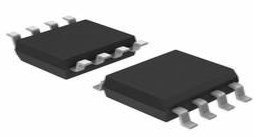 ACS712 Current Sensor: Pinout, Datasheet and Circuit
ACS712 Current Sensor: Pinout, Datasheet and Circuit09 July 202118222
 OP07 Operational Amplifier: Pinout, Datasheet, OP07 VS LM308
OP07 Operational Amplifier: Pinout, Datasheet, OP07 VS LM30815 December 20218785
 IRF640S Power MOSFET: Datasheet, IRF640 MOSFET, Pinout
IRF640S Power MOSFET: Datasheet, IRF640 MOSFET, Pinout11 August 20211758
 A Comprehensive Guide to S-24CS16A0I-D8S1G EEPROM Memory
A Comprehensive Guide to S-24CS16A0I-D8S1G EEPROM Memory07 March 2024322
 TIP125 Darlington Transistor: Datasheet PDF, Pinout, Circuit
TIP125 Darlington Transistor: Datasheet PDF, Pinout, Circuit15 February 20225003
 A Comprehensive Guide to LTC6946IUFD-1 Clock/Frequency Synthesizer
A Comprehensive Guide to LTC6946IUFD-1 Clock/Frequency Synthesizer06 March 2024188
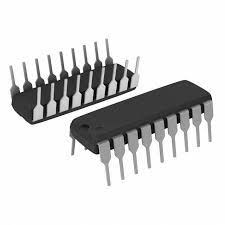 ADM242ANZ Receiver: Pinout, Specification, and Datasheet
ADM242ANZ Receiver: Pinout, Specification, and Datasheet02 June 2021524
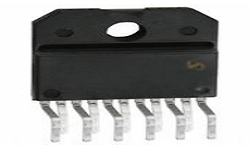 LM3886TF Power Amplifier: Features, Applications and Datasheet
LM3886TF Power Amplifier: Features, Applications and Datasheet14 October 20231131
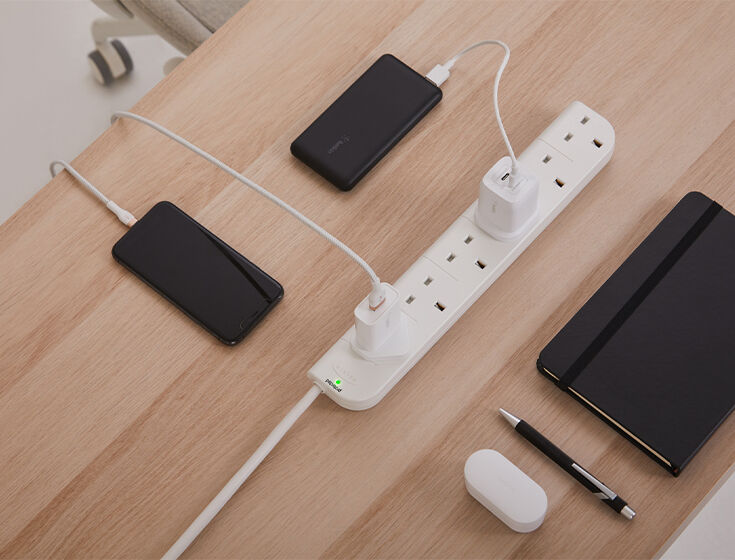 Surge Protector Best Practices for Everyday Use
Surge Protector Best Practices for Everyday Use10 July 2025495
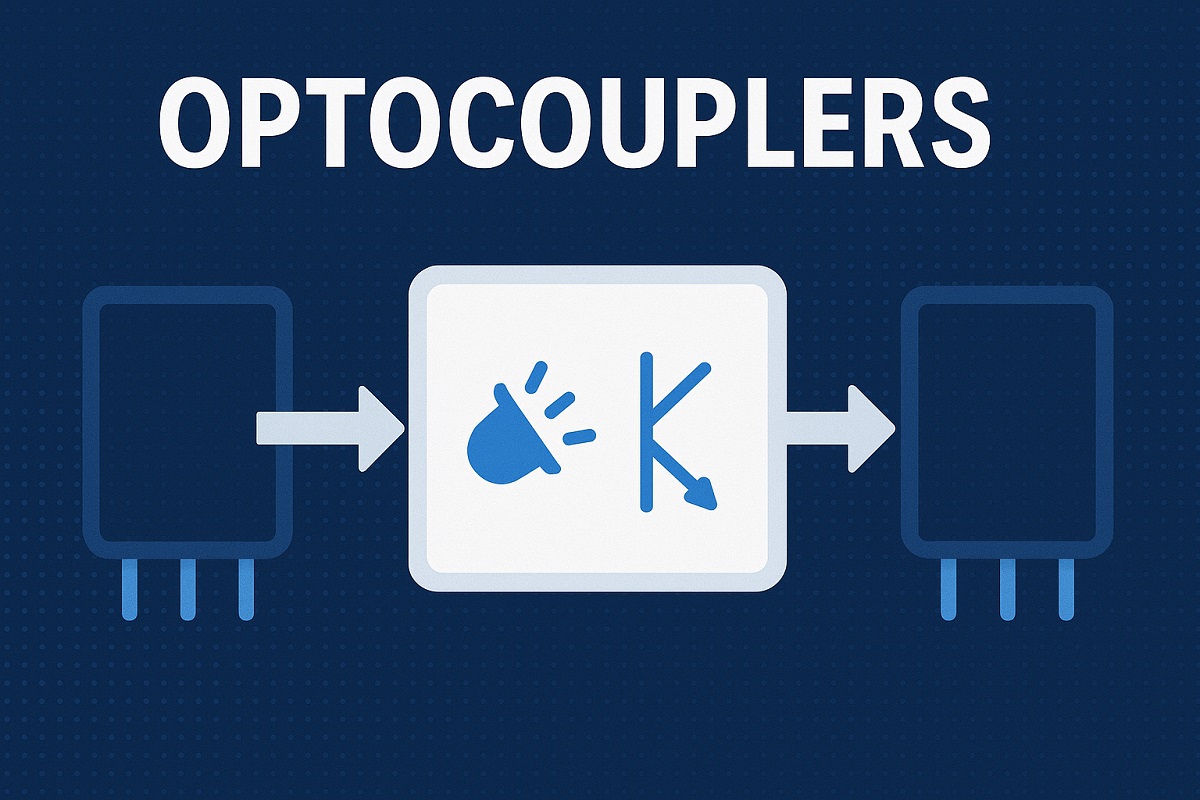 Optocouplers Guide: Understanding Types, Applications, and Circuit Design Tutorial
Optocouplers Guide: Understanding Types, Applications, and Circuit Design Tutorial06 June 20251353
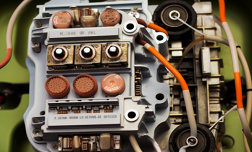 Revolutionizing the Electric Vehicle Industry with Silicon Carbide
Revolutionizing the Electric Vehicle Industry with Silicon Carbide10 August 20231745
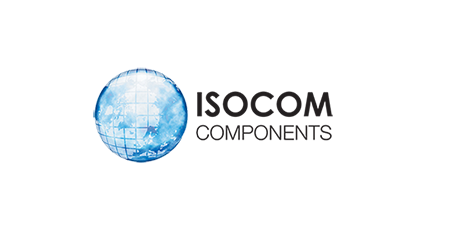 Good News: UTMEL Electronic is now the Authorized Distributor for Isocom Components 2004 Ltd.
Good News: UTMEL Electronic is now the Authorized Distributor for Isocom Components 2004 Ltd.10 November 20236460
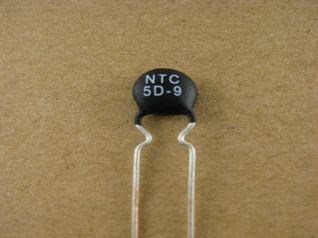 Metal Oxide Varistor: Specifications, Working and Construction
Metal Oxide Varistor: Specifications, Working and Construction26 January 20218774
 Diode Basis: Symbol, Types and Applications
Diode Basis: Symbol, Types and Applications25 February 20227807
 What are Memory Chips?
What are Memory Chips?03 December 20205914
 New Technology Helps Detect and Prevent Automated Browsing
New Technology Helps Detect and Prevent Automated Browsing13 November 2023759
Linear Technology/Analog Devices
In Stock
United States
China
Canada
Japan
Russia
Germany
United Kingdom
Singapore
Italy
Hong Kong(China)
Taiwan(China)
France
Korea
Mexico
Netherlands
Malaysia
Austria
Spain
Switzerland
Poland
Thailand
Vietnam
India
United Arab Emirates
Afghanistan
Åland Islands
Albania
Algeria
American Samoa
Andorra
Angola
Anguilla
Antigua & Barbuda
Argentina
Armenia
Aruba
Australia
Azerbaijan
Bahamas
Bahrain
Bangladesh
Barbados
Belarus
Belgium
Belize
Benin
Bermuda
Bhutan
Bolivia
Bonaire, Sint Eustatius and Saba
Bosnia & Herzegovina
Botswana
Brazil
British Indian Ocean Territory
British Virgin Islands
Brunei
Bulgaria
Burkina Faso
Burundi
Cabo Verde
Cambodia
Cameroon
Cayman Islands
Central African Republic
Chad
Chile
Christmas Island
Cocos (Keeling) Islands
Colombia
Comoros
Congo
Congo (DRC)
Cook Islands
Costa Rica
Côte d’Ivoire
Croatia
Cuba
Curaçao
Cyprus
Czechia
Denmark
Djibouti
Dominica
Dominican Republic
Ecuador
Egypt
El Salvador
Equatorial Guinea
Eritrea
Estonia
Eswatini
Ethiopia
Falkland Islands
Faroe Islands
Fiji
Finland
French Guiana
French Polynesia
Gabon
Gambia
Georgia
Ghana
Gibraltar
Greece
Greenland
Grenada
Guadeloupe
Guam
Guatemala
Guernsey
Guinea
Guinea-Bissau
Guyana
Haiti
Honduras
Hungary
Iceland
Indonesia
Iran
Iraq
Ireland
Isle of Man
Israel
Jamaica
Jersey
Jordan
Kazakhstan
Kenya
Kiribati
Kosovo
Kuwait
Kyrgyzstan
Laos
Latvia
Lebanon
Lesotho
Liberia
Libya
Liechtenstein
Lithuania
Luxembourg
Macao(China)
Madagascar
Malawi
Maldives
Mali
Malta
Marshall Islands
Martinique
Mauritania
Mauritius
Mayotte
Micronesia
Moldova
Monaco
Mongolia
Montenegro
Montserrat
Morocco
Mozambique
Myanmar
Namibia
Nauru
Nepal
New Caledonia
New Zealand
Nicaragua
Niger
Nigeria
Niue
Norfolk Island
North Korea
North Macedonia
Northern Mariana Islands
Norway
Oman
Pakistan
Palau
Palestinian Authority
Panama
Papua New Guinea
Paraguay
Peru
Philippines
Pitcairn Islands
Portugal
Puerto Rico
Qatar
Réunion
Romania
Rwanda
Samoa
San Marino
São Tomé & Príncipe
Saudi Arabia
Senegal
Serbia
Seychelles
Sierra Leone
Sint Maarten
Slovakia
Slovenia
Solomon Islands
Somalia
South Africa
South Sudan
Sri Lanka
St Helena, Ascension, Tristan da Cunha
St. Barthélemy
St. Kitts & Nevis
St. Lucia
St. Martin
St. Pierre & Miquelon
St. Vincent & Grenadines
Sudan
Suriname
Svalbard & Jan Mayen
Sweden
Syria
Tajikistan
Tanzania
Timor-Leste
Togo
Tokelau
Tonga
Trinidad & Tobago
Tunisia
Turkey
Turkmenistan
Turks & Caicos Islands
Tuvalu
U.S. Outlying Islands
U.S. Virgin Islands
Uganda
Ukraine
Uruguay
Uzbekistan
Vanuatu
Vatican City
Venezuela
Wallis & Futuna
Yemen
Zambia
Zimbabwe










